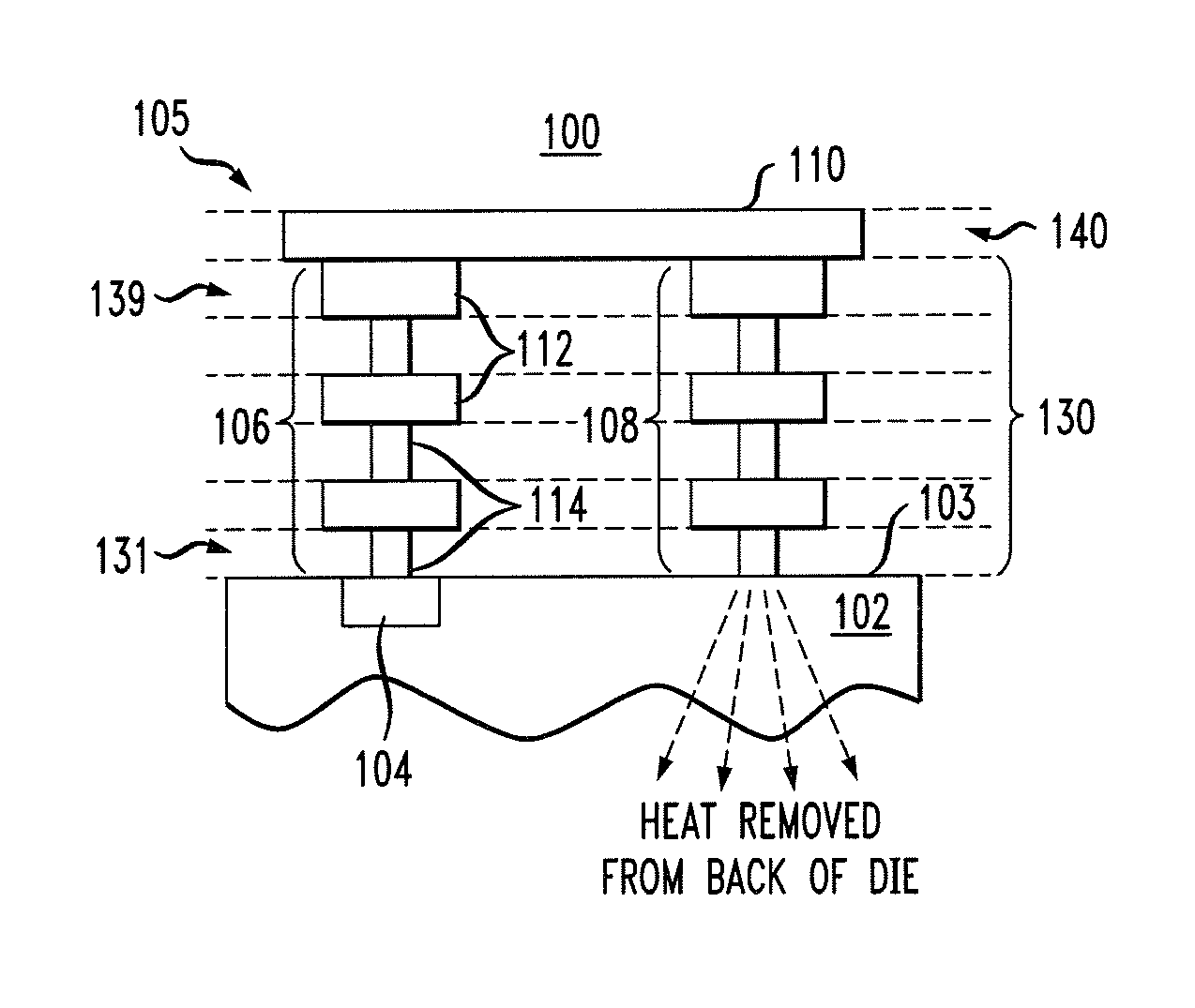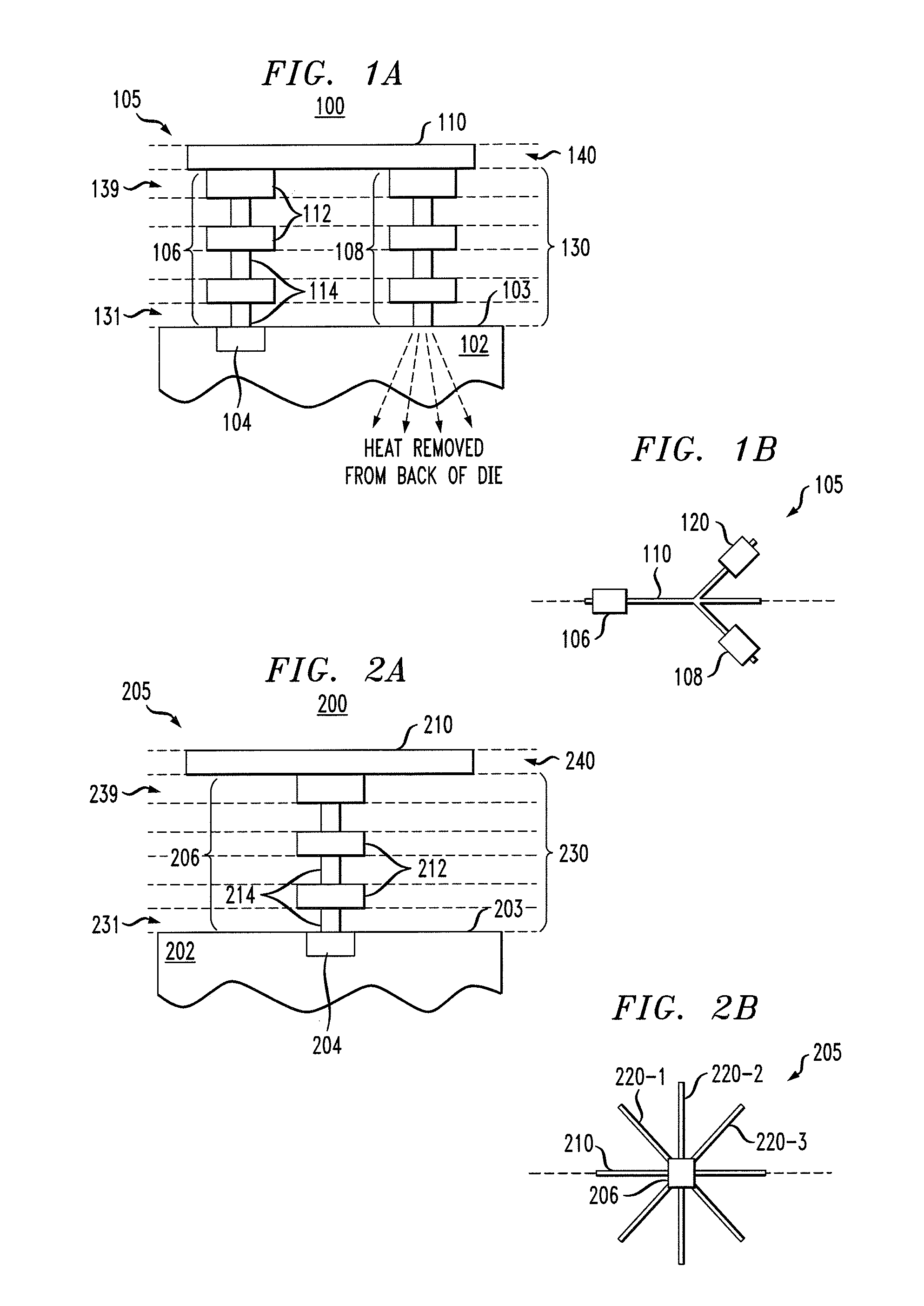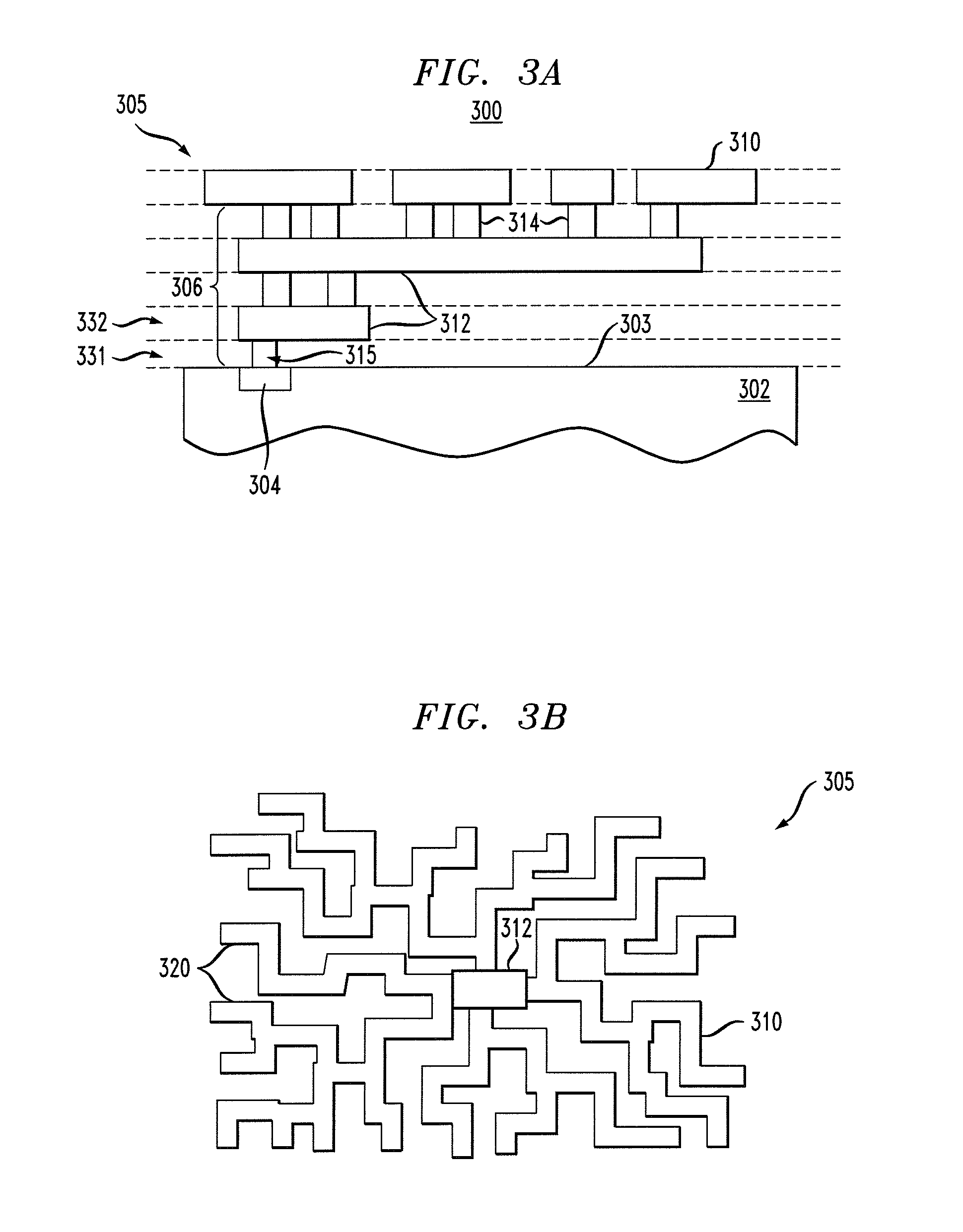Integrated circuit with heat conducting structures for localized thermal control
a technology of integrated circuits and heat conducting structures, applied in the direction of semiconductor devices, semiconductor/solid-state device details, electrical apparatus, etc., can solve the problems of device reliability failure, high power consumption and heat generation, and more susceptible circuits to performance degradation, etc., to improve the thermal control of hot spots on the integrated circuit substrate, the effect of easy implementation
- Summary
- Abstract
- Description
- Claims
- Application Information
AI Technical Summary
Benefits of technology
Problems solved by technology
Method used
Image
Examples
Embodiment Construction
[0020]The present invention will be illustrated herein in the context of exemplary integrated circuit arrangements comprising heat conducting structures. It is to be appreciated that the particular circuit arrangements and associated heat conducting structures shown in the illustrative embodiments are presented by way of example only. Accordingly, the invention should not be construed as requiring any particular aspects of these exemplary elements.
[0021]The term “integrated circuit die” as used herein may comprise any type of device wherein electrical circuits are fabricated in or on a semiconductor substrate. A given integrated circuit die may be of any type including analog, digital or mixed signal. Furthermore, a given die may comprise electrical circuits of any type, configuration and dimension.
[0022]The term “substrate” comprises any type of crystalline semiconductor material and is not limited to that formed of silicon. Optionally, other materials may be used such as gallium a...
PUM
 Login to View More
Login to View More Abstract
Description
Claims
Application Information
 Login to View More
Login to View More - R&D
- Intellectual Property
- Life Sciences
- Materials
- Tech Scout
- Unparalleled Data Quality
- Higher Quality Content
- 60% Fewer Hallucinations
Browse by: Latest US Patents, China's latest patents, Technical Efficacy Thesaurus, Application Domain, Technology Topic, Popular Technical Reports.
© 2025 PatSnap. All rights reserved.Legal|Privacy policy|Modern Slavery Act Transparency Statement|Sitemap|About US| Contact US: help@patsnap.com



